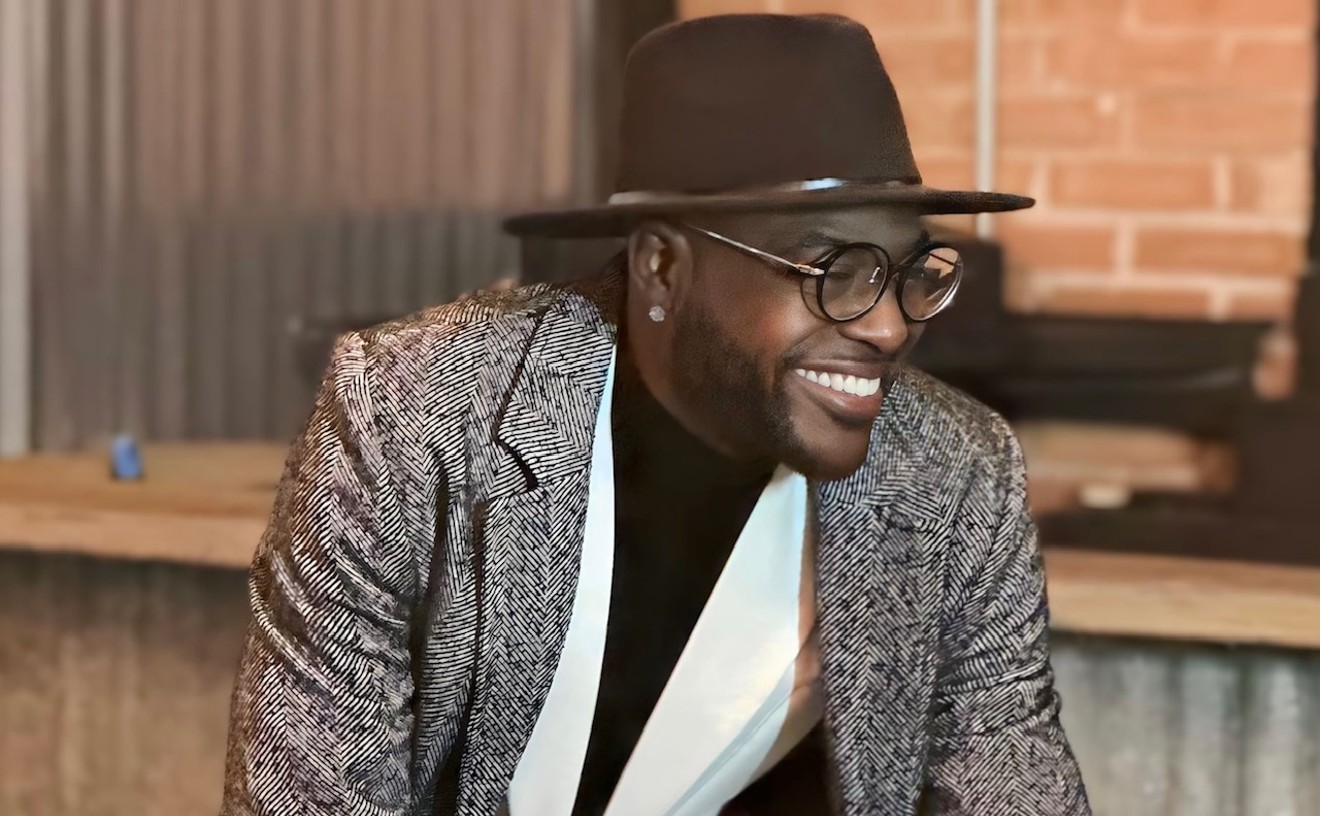In 1988, Schutze's private gallery, Beaux Arts, which specializes in antique prints, was just 6 months old. That's when he received a call from the owner of an Austin gallery who asked him to send her 15 prints so she could present them to a corporate client for possible sale.
"I sent the prints and then waited to hear back," recalls Schutze. "After two weeks, I called her gallery. I was repeatedly given a runaround. Then when I called after hours and finally got the owner on the line, she lied to me."
Schutze drove to Austin and discovered the unscrupulous gallery owner had shrink-wrapped his prints and was selling them under her own label. He picked up two of his prints--plus some of the Austin gallery's prints, equivalent in value to the artwork he was still missing--and walked out the door. "I didn't want her art," he says. "I just needed something of hers of equal value so I could negotiate."
Shortly after Schutze returned to Dallas, an Austin police detective called him regarding a reported theft of some expensive paintings from the Austin gallery. Schutze disputed the value of the prints in his possession, but agreed to return to Austin with the stolen art.
"I drove back to Austin, and we exchanged artwork at the gallery. I got mine and she got hers. It meant something to me not to be taken advantage of. I was just getting started, and I couldn't afford the loss.
"I'm the sort of person who'd rather punch you in the nose--and take the consequences--than sue you," he says.
Beaux Arts, located in the Dallas Design District, sells antiquarian prints and rare maps dating back to the 16th century, as well as oil paintings, watercolors, drawings, and turn-of-the-century vintage posters.
Its focus is the movement, dating back to the 15th century, to develop art into a mass medium. If you have a print hanging on the wall of your home, you can consider yourself the movement's beneficiary.
This revolution--involving antique prints pulled from woodblocks or copper engravings--extended art beyond the hands of aristocrats and clerics. And it has allowed Schutze, now 39, to build a thriving business.
Schutze started the business in 1988 with $300, $3,000 worth of credit on his charge card, and 200 architectural prints. "In the beginning, I worked out of my study at home. Over time, I spread from the study to the front room of the house and finally into the dining room." He grins. "That's when my wife informed me it was time to move the business."
His work grew out of his passion for history, "especially the study of archaeology and ancient civilizations." But a "practical" degree in marketing and finance from the University of Texas first led him into a series of sales jobs. Schutze says he learned much, but hated the work. "I felt like I would be living Death of a Salesman if I stayed in that business."
So after seven years selling industrial equipment, he quit, and spent the next 10 months trying to figure out what he should be doing. That's when he bought his first rare print, an architectural steel engraving.
"Steel engraving is really a dead art," he says. "The detail is so fine, and you can't afford to make a mistake, because everything shows up." Through a process developed in the 1400s, an engraver used incised lines in copper or steel plates to create images. The engraver carved pictures into the metal in reverse; many used to stencil them freehand while viewing model images in a mirror. The recessed lines held the ink, which was then picked up on damp paper in a printing press.
These emerging printing techniques popularized artists and boosted their prosperity. Architects, anatomists, botanists, and zoologists all began spreading their knowledge through printed illustrations.
When Schutze bought his first print, he overheard the antique dealer telling another customer how many steel engravings had recently sold. Schutze knew that the labor-intensive process guaranteed there wouldn't be many steel engravings on the market, so he figured they might be a good business opportunity.
For a while, architectural prints were affordable. Some exquisite works were on the market, appearing abroad then gradually finding their way to Dallas. Schutze began studying printing techniques at the library, reading up on aquatints and engravings, etchings, and stone lithography. He also educated himself on the conservation and restoration of old works.
Before long, it became more difficult to locate original prints, and prices began to climb. Schutze developed relationships with booksellers in this country and in Europe so that he'd be able to offer originals to his customers while building an inventory of reproductions for hand-coloring.
"I went into a lot of debt during this period buying art," he says. On a trip to London, "I couldn't afford much, but I borrowed on my card in order to buy a rare botanical portfolio. It was a real showpiece collection for me at the time."
Schutze opened his first gallery in 1991--2,500 square feet on the top floor of an old building on Fairmount, near the Quadrangle. His primary market was people in the trade, not individual buyers. "At the time, I didn't realize that I should be in the Design District. I was naive enough to think that if you have what they want, they'll find you."
Some did. Many didn't.
After three years, he moved to a 12,000-square-foot space on Hi Line Drive. "If you want to keep the buyers here in town, and not in New York, then you have to offer selection," Schutze says. "And as my selection grows, so do my space needs."
The move paid off. Schutze has added a corporate art consultant to his staff, as well as two gallery assistants, and he's compiled an impressive client list including resorts, law firms, corporations, and foreign embassies.
Walking around Beaux Arts is like visiting a print museum. There's a reference library for customers, in addition to wall-to-wall prints. A 16th-century European print depicting Native Americans as cannibals resides just around the corner from turn-of-the-century original watercolor sketches from the St. Joseph Stained Glass Company in St. Joseph, Missouri.
In another room, there's a work by Giovanni Battista Piranesi (1720-1778), the granddaddy of architectural printmakers. This Italian etcher, archaeologist, and architect created etchings of classical Rome, as well as a fantastic series of imaginary prisons. During his lifetime, he made 4,000 impressions from nearly 1,000 architectural etchings, charging a mere 2 1/2 paoli (or a few cents) for each print. Schutze's unframed copper etching from Piranesi's "Veduti Di Roma" carries a price tag of $1,200.
Schutze's personal favorite in the collection: a copper engraving called "St. Jerome in his Study," created by Albrecht Durer in 1514.
For Schutze, the history of each piece is just as interesting as its decorative properties. Among Dallas gallery owners, he considers himself uniquely fortunate not to have to deal with artistic egos.
"No offense to anybody," he says, "but I like my artists dead."
Beaux Arts, 1505 Hi Line Drive. (214) 741-5555.










